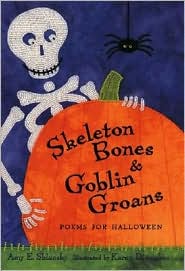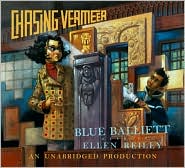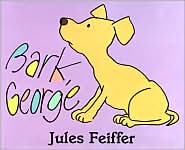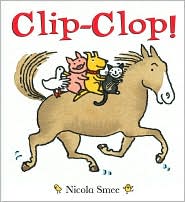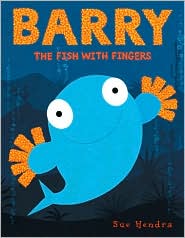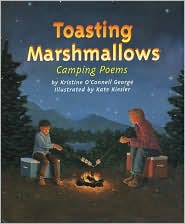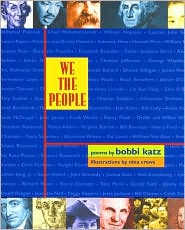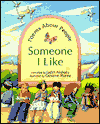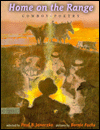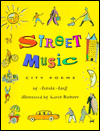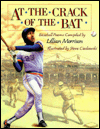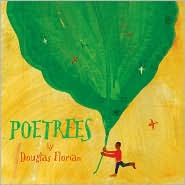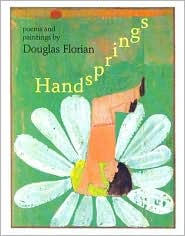 This is a reposting of the review for the book Hitler Youth: Growing Up in Hitler's Shadow, which was originally published October 26, 2007 for a course during my MLS degree. This is a great book and I hope that you find it informational!
This is a reposting of the review for the book Hitler Youth: Growing Up in Hitler's Shadow, which was originally published October 26, 2007 for a course during my MLS degree. This is a great book and I hope that you find it informational!
BIBLIOGRAPHYBartoletti, Susan Campbell. (2005). HITLER YOUTH: GROWING UP IN HITLER’S SHADOW. NY: Scholastic Nonfiction/Scholastic, Inc. ISBN: 0439353793.
PLOT SUMMARYThrough the lives of twelve teenagers involved in the Hitler Youth, author Susan Bartoletti tells the powerful and detailed story of how Germany’s children were used to strengthen the Nazi Party and Adolf Hitler’s rise to power during the twelve years of the Third Reich.
CRITICAL ANALYSISIn her Author’s Note at the end of the book author Susan Bartoletti tells the story of how an article stating that Adolf Hitler and the Nazi Party “‘rode to power on the shoulders of the politically active youth’” had fueled her strong and deep interest in the story of the children living in Germany during the Third Reich. For two years, she visited museums and libraries to pour over books, articles, diaries, and letters to learn more. She even visited Germany to see Berlin and other sites where the Hitler Youth did many of their activities. To finalize her research, Bartoletti interviewed many former members of the organization to hear their personal accounts. To gather further insight of this riveting history, she found stories of Jewish children and youth who lived during the Third Reich. Her goal, she states, is “an attempted to” gain an understanding and to “make sense of the fact that adults taught young people to hate, to kill, and to feel superior over others. After all, the Hitler Youth weren’t born Nazis; they became Nazis” (Bartoletti, p.161-62).
Hitler Youth: Growing Up in Hitler’s Shadow is an extremely well organized. After providing a table of contents, which list the chapter headings, Bartoletti introduced the twelve young people who are in the book by providing their photographs and a brief biographical tidbit that gave their birth year, where they were born and how they were involved in the Hitler Youth. The life of the organization from its beginning to its end is wonderfully illustrated and organized through the ten chapters, which hit on the major events during the twelve years of its existence, for examples the murder of Herbert Norkus, who became a Hitler Youth martyr, the change of the school system, the beginning of the Holocaust, which also includes the discrimination against Germany’s own mentally and physically “unfit” citizens (Bartoletti, p. 93), when Hitler made all remaining eligible children join the Hitler Youth under threat of hard labor at a concentration camp, and when the Allies invaded Germany in 1945.
The chapters also illustrate the progression of the twelve young people’s, as well as hundreds of other children, feeling towards the organization. For example, Helmuth Hubener, Karl-Heinz Schnibbe, and Rudolph (Rudi) Wobbe eagerly joined the Hitler Youth, as did all the children; however, they soon grew tired of the regime and began to listen to the illegal foreign radio stations and began to distribute anti-Nazi leaflets. Another resistance group called the White Rose was lead by another Hans Scholl when he became a medical student at the beginning of the war (Bartoletti, p. 118-19).
The text reads like a story; however it is full of information. To add personal anecdotes to the already gripping information, actual pieces of dialogue from the interviews and correspondence of former members of the organization are included to give the readers a clear insight into the thoughts and feelings of the children as well as their parents. A good example of this is when the Scholl children, Inge, Hans and Sophie, joined the Hitler Youth despite the disapproval of the father, Inge states that they “‘entered into the Hitler Youth with body and soul, […] and we could not understand why [their] father did not approve, why he was not happy and proud…. Sometimes he would compare Hitler with the Pied Piper of Hameline, with his flute, led the children to destruction’” (Bartoletti, p. 30). Despite all of the factual details, having been written in a story-like format with actual pieces of dialogue the book has a constant ease of crystal clear understanding and smooth flow from chapter to another.
Through out the entire book, with at least one on every page, Bartoletti provides black and white photographs depicting what life was like during Nazi Germany. There are pictures of children in uniforms performing all sorts of duties and activities, there are pictures showing the destruction that the Third Reich had caused, as well as members at the time of being captured by American soldiers and pictures of the children performing their punishment labor. The use of these photographs provides the visuals to the at time chilling text, and allows the readers to see the faces and environment that the members live in, letting them know that the Hitler Youth was only made of up children.
The final element to the story of the twelve young people who are in the book is the Epilogue. This rare glimpse into the lives of these people allows the readers to learn what happened to the young people who survived the war and provides their thoughts and feelings of their actions while being members of the Hitler Youth.
There are several of ways to access the information found in this amazing book. The chapter headings and the table of contents is one way for readers to find a specific time or event that is discussed. In the back of the book there is an Index, which provides the page of numbers of various topics within the book. Bartoletti also provides an index of where her quotes came from, a time of the Hitler Youth, and finally a note about the photographs used, explaining that the photographs in the book is only a “sampling of the millions taken during the Third Reich,” and recommends the readers who would like to view more photographs to visit the online collections at the Library Congress and at the United States Holocaust Memorial Museum (p. 163).
With all these amazing educational details and personal anecdotes of the lives of the children during the power of the Third Reich Bartoletti’s
Hitler Youth: Growing Up in Hitler’s Shadow is a powerful and captivating book that allows readers of to truly learn about the Hitler Youth through the eyes of its members that were the exact same age. This book will provoke critical thinking and powerful discussions.
BOOK REVIEWSPUBLISHER WEEKY
Bartoletti (Kids on Strike!) offers a unique and riveting perspective on WWII by focusing on the young people who followed Hitler from 1933-1945. The narrative primarily focuses on members of the Hitler Youth, but also profiles some of the group's dissidents and its Jewish targets. Hitler began his quest for dominance with young people, recognizing them as "a powerful political force" and claiming, "With them I can make a new world." Bartoletti describes how the propaganda of the Hitler Youth attracted children: "The overnight camping trips, campfires, and parades sounded like a great deal of fun," said one 12-year-old. But the organization also emphasized loyalty to the Third Reich above all (including family-one eight-year-old, Elisabeth Vetter, turned in her parents to the Nazis). The author personalizes the war by placing identifiable individuals at the center of the events, such as Sophie Scholl, who moved away from Nazi ideas as a teen and in college joined the "White Rose" group that published pamphlets detailing Nazi evils and urging resistance-a crime for which she and others were executed. Powerful black-and-white photographs testify to the lure and also the cruelty of the Nazis. Bartoletti's portrait of individuals within the Hitler Youth who failed to realize that they served "a mass murderer" is convincing, and while it does not excuse the atrocities, it certainly will allow readers to comprehend the circumstances that led to the formation of Hitler's youngest zealots. Ages 7-10. (Apr.) Copyright 2005 Reed Business Information. (May 23, 2005)
SCHOOL LIBRARY JOURNAL
Gr 5-8-Hitler's plans for the future of Germany relied significantly on its young people, and this excellent history shows how he attempted to carry out his mission with the establishment of the Hitler Youth, or Hitlerjugend, in 1926. With a focus on the years between 1933 and the end of the war in 1945, Bartoletti explains the roles that millions of boys and girls unwittingly played in the horrors of the Third Reich. The book is structured around 12 young individuals and their experiences, which clearly demonstrate how they were victims of leaders who took advantage of their innocence and enthusiasm for evil means. Their stories evolve from patriotic devotion to Hitler and zeal to join, to doubt, confusion, and disillusion. (An epilogue adds a powerful what-became-of-them relevance.) The large period photographs are a primary component and they include Nazi propaganda showing happy and healthy teens as well as the reality of concentration camps and young people with large guns. The final chapter superbly summarizes the weighty significance of this part of the 20th century and challenges young readers to prevent history from repeating itself. Bartoletti lets many of the subjects' words, emotions, and deeds speak for themselves, bringing them together clearly to tell this story unlike anyone else has.-Andrew Medlar, Chicago Public Library, IL Copyright 2005 Reed Business Information. (June 1, 2005)
CONNECTIONS
*Read more books like The Way People Live: Life in the Hitler Youth by Jennifer Keeley to learn more about the Hitler Youth
* Learn about the lives of children during the Second World War with books like Remember World War II: Kids Who Survived Tell Their Stories by Dorinda Makanaonalani Nicholson.
*For those who are interest, learn about the Holocaust with books like A history of the Holocaust by Yehuda Bauer and Nili Keren, and Ten Thousand Children: True Stories Told by Children Who Escaped the Holocaust on the Kindertransport by Anne Fox and Eva Abraham-Podietz
*Open up an opportunity for the young people to have a discussion where they can share their thoughts and opinions on the subject.
 INTRODUCTION
INTRODUCTION